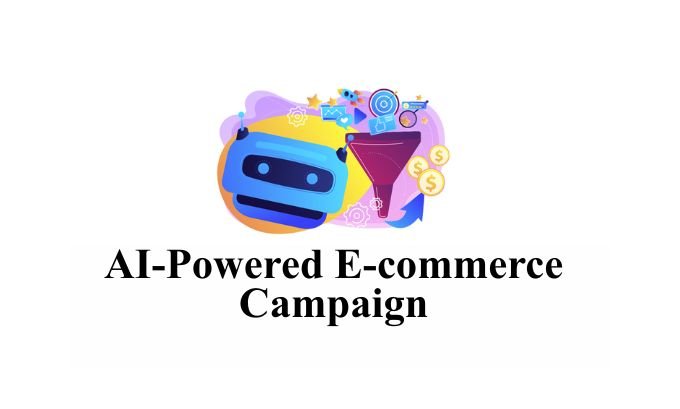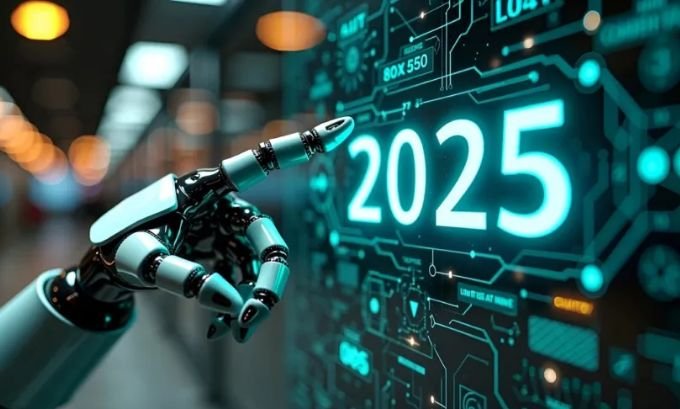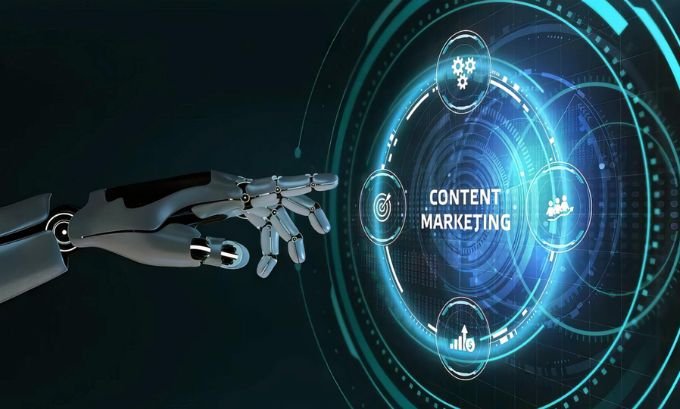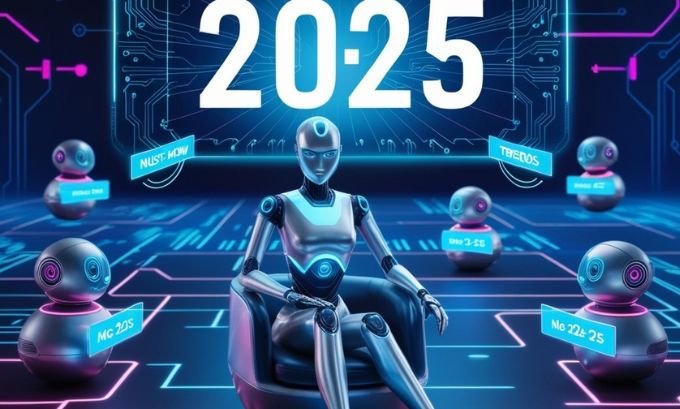Artificial intelligence (AI) is no longer a futuristic concept; it is the engine powering modern digital advertising. By 2025, the role of AI in digital advertising will become even more central, transforming how brands connect with audiences. This technology now enables a level of precision and efficiency that was once impossible, moving beyond simple automation to become a strategic partner for marketers.
This comprehensive guide explores the evolving landscape of AI in digital advertising 2025. We will break down its core components, from Machine Learning (ML) to Programmatic Advertising, and show you how these technologies are reshaping everything from Customer Personalization to Content Marketing.
Table of Contents
The Core Role of AI in Digital Advertising 2025
Artificial Intelligence (AI) is fundamentally changing digital advertising by enabling machines to perform tasks that traditionally require human intelligence. This includes analyzing data, making predictions, and optimizing campaigns in real-time. In 2025, AI is not just a tool but the foundational layer upon which successful advertising strategies are built. It processes vast amounts of customer data analysis to deliver more relevant and effective ads.
The primary driver behind AI’s impact is Machine Learning (ML), a subset of AI where algorithms learn from data without being explicitly programmed. For advertisers, this means campaigns can automatically improve over time. ML models analyze ad performance, identify patterns in consumer behavior, and adjust targeting parameters to maximize return on investment (ROI). This continuous learning loop makes advertising more dynamic and responsive to market changes.
Key Applications of AI in Advertising
- Predictive Analytics: Forecasting which ad creatives, audiences, and channels will perform best.
- Customer Personalization: Delivering unique ad experiences to individual users based on their behavior and preferences.
- Marketing Automation: Automating repetitive tasks like bidding, budget allocation, and reporting.
- Enhanced Ad Targeting: Identifying and reaching niche audience segments with unparalleled accuracy.

A Real-World Scenario: AI-Powered E-commerce Campaign
Imagine an online fashion retailer launching a new line of sustainable activewear. In the past, they might have created a broad campaign targeting “women aged 25-40 interested in fitness.”
With AI in digital advertising 2025, the approach is far more sophisticated.
- Data Ingestion: The AI platform ingests data from multiple sources: website browsing history, past purchases, social media engagement, and even competitor activity.
- Predictive Segmentation: Using Predictive Analytics, the AI identifies micro-segments. It finds a group of users who not only like fitness but have also recently searched for “eco-friendly fabrics” and engaged with social media posts about environmentalism.
- Dynamic Creative Optimization: Instead of one generic ad, the AI assembles personalized ad creatives. A user who viewed a specific pair of leggings sees an ad for those exact leggings, while another sees an ad featuring a top they added to their cart but didn’t buy.
- Automated Bidding: The AI manages the Programmatic Advertising bids in real-time, paying more for ad placements likely to convert and less for lower-value impressions.
This entire process is automated, allowing the marketing team to focus on high-level strategy rather than manual campaign adjustments. The result is a more efficient, personalized, and effective advertising campaign.
Revolutionizing Ad Campaigns with Programmatic Advertising
Programmatic Advertising is the automated buying and selling of digital ad space. AI is the engine that makes this process intelligent. Instead of manual negotiations, algorithms bid on ad impressions in real-time auctions that take place in milliseconds. By 2025, nearly all digital display advertising is managed this way.
The system uses Machine Learning to decide which ad to show to which user, at what time, and for what price. It analyzes hundreds of signals—such as user demographics, browsing behavior, location, and time of day—to determine the value of a specific ad impression for a specific user. This level of customer data analysis ensures that ad budgets are spent with maximum efficiency.
How AI Enhances Programmatic Bidding
- Real-Time Bidding (RTB): AI algorithms participate in auctions to buy ad space on a per-impression basis, ensuring brands only pay for impressions that match their target criteria.
- Lookalike Modeling: AI analyzes the characteristics of a brand’s best customers and finds new audiences across the web who share similar traits.
- Budget Optimization: The system automatically allocates more budget to high-performing channels and campaigns while reducing spend on those that are underperforming.
Strengths of AI-Powered Programmatic Advertising
- Efficiency: Automates a complex and time-consuming process, freeing up marketing teams.
- Precision: Targets users with a level of accuracy that is impossible to achieve manually.
- Scalability: Allows brands to run highly targeted campaigns across millions of websites and apps simultaneously.
Areas for Improvement
- Transparency: The “black box” nature of some AI algorithms can make it difficult to understand why certain decisions were made.
- Ad Fraud: While AI helps detect fraud, sophisticated bots can still mimic human behavior, leading to wasted ad spend.
- Brand Safety: There is a risk that ads could appear next to inappropriate or off-brand content if controls are not properly configured.

Hyper-Personalization: The New Standard in Customer Engagement
Customer Personalization is no longer just about using a customer’s first name in an email. Thanks to AI, it’s about creating truly unique experiences for every user. By leveraging customer data analysis, AI algorithms can understand individual preferences and behaviors to deliver tailored ad content, product recommendations, and offers.
Natural Language Processing (NLP) plays a significant role here. NLP allows machines to understand and interpret human language, enabling them to analyze customer reviews, social media comments, and support chat logs. This provides deep insights into customer sentiment and intent, which can be used to personalize messaging.
Examples of AI-Driven Personalization in Action
- Netflix: Its recommendation engine analyzes your viewing history, the time of day you watch, and even the devices you use to suggest content you’re likely to enjoy.
- Amazon: The “Customers who bought this also bought” feature is a classic example of AI-driven collaborative filtering, a Machine Learning technique.
- Spotify: Its “Discover Weekly” playlist is curated by an AI that analyzes your listening habits and compares them to users with similar tastes.
Personalization in Digital Advertising
For AI in digital advertising 2025, this means ads can be dynamically tailored to the individual. An ad for a travel company could show images of a beach to a user who has been searching for tropical vacations, while showing mountain scenery to someone who has been browsing hiking gear. This is achieved through Dynamic Creative Optimization (DCO), where AI mixes and matches ad components (images, headlines, calls-to-action) to create the perfect ad for each user.
The Role of Predictive Analytics in Shaping Strategy
Predictive Analytics uses AI and Machine Learning to forecast future outcomes based on historical data. In digital advertising, it helps marketers make smarter, data-driven decisions. Instead of reacting to campaign performance, they can anticipate trends and proactively optimize their strategies.
How Predictive Analytics is Used in Advertising
- Lead Scoring: AI models analyze customer data to predict which leads are most likely to convert, allowing sales and marketing teams to prioritize their efforts.
- Customer Churn Prediction: By identifying customers who are at risk of leaving, brands can target them with retention campaigns before it’s too late.
- Lifetime Value (LTV) Prediction: AI can forecast the total revenue a customer will generate over their lifetime, helping marketers determine how much to invest in acquiring different types of customers.
- Campaign Forecasting: Before launching a campaign, Predictive Analytics can estimate its potential reach, engagement, and conversion rates, allowing for more accurate budget planning.
This forecasting ability is a game-changer for Digital Marketing. It moves advertising from a reactive discipline to a proactive one, enabling brands to stay ahead of the curve and allocate resources where they will have the greatest impact.
Automating Success: AI and Marketing Automation
Marketing Automation platforms have been around for years, but AI has made them exponentially more powerful. AI supercharges automation by adding a layer of intelligence that enables systems to make decisions and adapt on their own.
Traditionally, Marketing Automation relied on rule-based workflows (e.g., “If a user downloads an e-book, send them a follow-up email in three days”). With AI, these workflows become dynamic. The system might analyze a user’s behavior and decide that sending a text message with a special offer would be more effective than an email.
AI-Enhanced Marketing Automation vs. Traditional Automation
| Feature | Traditional Automation | AI-Enhanced Automation |
|---|---|---|
| Logic | Rule-based (If/Then) | Predictive and adaptive |
| Segmentation | Manual lists based on explicit data | Dynamic segments based on behavior |
| Content | Static or pre-defined | Personalized and dynamically generated |
| Timing | Scheduled sends | Optimized send times for each user |
| Lead Scoring | Based on points for specific actions | Predictive scoring based on conversion likelihood |
This shift allows for a more fluid and responsive customer journey. The system guides users with the right message at the right time, on the right channel, all without manual intervention.

AI’s Impact on Content Marketing and SEO
The influence of AI in digital advertising 2025 extends to Content Marketing and SEO. AI tools are now capable of generating high-quality written content, optimizing it for search engines, and even creating video and image assets.
AI-Powered Content Creation
Tools leveraging Natural Language Processing (NLP) and generative models can write blog posts, ad copy, social media updates, and product descriptions. While human oversight is still crucial for ensuring quality and brand voice, these tools can dramatically accelerate the content creation process. They analyze top-ranking articles for a given keyword and generate content that is structured for SEO success.
AI for SEO and Content Optimization
AI platforms can analyze vast datasets to identify content gaps, discover trending topics, and recommend keywords. They can also perform technical SEO audits, identifying issues that could harm a website’s ranking. For Content Marketing, AI can analyze existing content and suggest improvements, such as adding internal links, improving readability, or targeting related keywords to build topical authority.
Final Thoughts: Navigating the Future of AI in Advertising
The integration of AI in digital advertising 2025 is not a passing trend; it is a fundamental evolution of the industry. From hyper-personalized ad experiences powered by customer data analysis to the efficiency of Programmatic Advertising and the foresight of Predictive Analytics, AI is empowering marketers to achieve unprecedented results.
To succeed in this new era, marketers must embrace a mindset of continuous learning. Understanding the principles of Artificial Intelligence and Machine Learning is no longer optional. By harnessing these powerful technologies, brands can build more meaningful connections with their customers, optimize their advertising spend, and drive sustainable growth.
The key is to use AI not as a replacement for human creativity and strategy, but as a powerful partner that enhances them.
Ready to leverage AI for your next campaign? Start by identifying a specific challenge—such as improving lead quality or personalizing your ad creative—and explore AI-powered tools that can help you solve it.
Frequently Asked Questions (FAQ)
1. What is AI in digital advertising?
AI in digital advertising refers to the use of Artificial Intelligence technologies, particularly Machine Learning and Natural Language Processing, to automate, optimize, and personalize advertising campaigns. It helps in tasks like audience targeting, ad creative optimization, real-time bidding, and performance analysis.
2. How will AI change advertising in 2025?
By 2025, AI will make advertising more predictive, personalized, and automated. Key changes include the dominance of Programmatic Advertising, hyper-personalization at scale through Dynamic Creative Optimization, and the widespread use of Predictive Analytics for strategic planning and budget allocation.
3. What is an example of AI in advertising?
A great example is Amazon’s recommendation engine. It uses Machine Learning to analyze your browsing and purchase history to show you personalized product ads and recommendations across its website and the broader internet. This is a form of AI-driven Customer Personalization.
4. Can AI replace human advertisers?
No, AI is unlikely to replace human advertisers entirely. Instead, it acts as a powerful assistant. AI handles data-heavy, repetitive tasks like bidding and analysis, freeing up humans to focus on strategic thinking, creative development, and building client relationships—areas where human intuition and expertise excel.
5. What are the main benefits of using AI in digital marketing?
The main benefits include increased efficiency through Marketing Automation, improved ROI from better targeting and optimization, deeper customer insights from advanced customer data analysis, and the ability to deliver highly personalized experiences that boost engagement and loyalty.
6. Is AI used in social media advertising?
Yes, extensively. Platforms like Meta (Facebook and Instagram) and TikTok use AI to power their ad delivery systems. AI determines which ads to show to which users, optimizes ad placements for the best results, and helps advertisers create lookalike audiences to find new customers.
7. What skills are needed for a career in AI-powered advertising?
Future advertisers will need a hybrid skillset. Strong analytical skills to interpret data and understand how AI models work are crucial. This should be combined with traditional marketing strengths like strategic planning, creativity, brand storytelling, and an understanding of consumer psychology. Familiarity with Digital Marketing tools and platforms is also essential.

